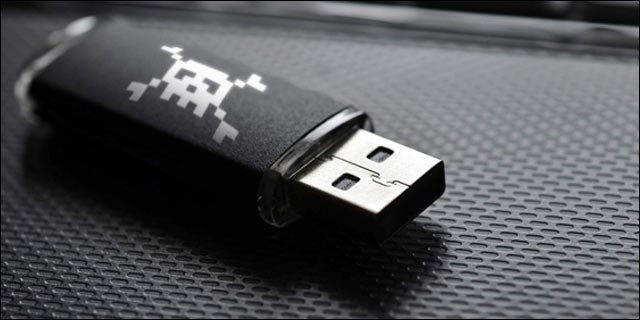
It may sound like a backwards step, but a group of cyber criminals have decided to enlist the help of the postal service to deliver their malware.
Snail mail may feel like an archaic method of attack for cyber criminals, but it’s surprisingly effective as a series of attacks – using the BadUSB malware – have proven. We all deal with traditional mail daily, so it’s easy to take it for granted, and it’s this familiarity that the hackers are targeting. This particular attack, as the name suggests, involves a malicious USB drive. These attacks have proved successful in the past and the BadUSB campaign has the potential to cause significant damage.
How Does BadUSB Work?
Delivered through the United Parcel Service and United States Postal Service, the malicious USB drives come loaded with malware and allow a threat actor to take control of a victim’s USB port. Activating the malware is simple: all it needs is to be plugged into a USB port.
However, there needs to be a reason why a victim decides to plug the device into their PC. And the minds behind BadUSB do this by instilling a sense of urgency in the recipient. This is achieved by claiming that the USB drive contains official Covid-19 warnings or that the drive is an Amazon gift from a friend.
Once plugged into a PC, the affected USB port can be manipulated to believe that an alternate device is installed e.g. a keyboard or mouse. These fake devices can then be controlled by remote cyber criminals and used to cause untold damage. For example, a keyboard and mouse could be used to take full control of a PC and download further malware. In 2020, the BadUSB malware was involved in a series of attacks which downloaded ransomware to exploit the finances of those attacked, and this could easily happen again.
Staying Safe from Malicious USB Drives
BadUSB has the potential to cause you a serious headache, both in terms of your data and your finances. As a result, it’s crucial that you steer clear of this and similar attacks, an outcome which is possible if you do the following:
- Be wary of USB drives: while they are not one of the ‘go to’ options for hackers, infected USB drives (and the USB killer) have the capacity to cause real damage. Therefore, if you are presented (or even find) a USB drive which doesn’t belong to your company, do not plug it in to your PC. Instead, ask an IT professional to safely analyze it.
- Disable USB ports: there’s not a pressing need for your employees to be plugging additional devices into their PC, so it makes sense to disable access to USB ports. Sometimes, this is as simple as blocking any unused ports and, in other scenarios, you may want to restrict access to these ports through administration privileges.
- Disable Autorun: if your employees do need access to their USB ports, then it may be worth disabling the autorun feature associated with them. This feature allows USB drives to automatically open – and activate their contents – once plugged in. However, with autorun disabled, there is a chance to view the drive’s contents before running it.
For more ways to secure and optimize your business technology, contact your local IT professionals.
Read More




